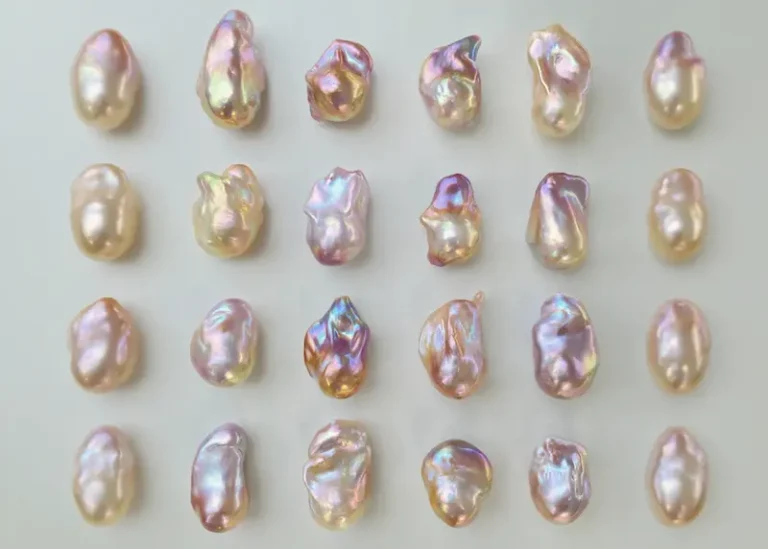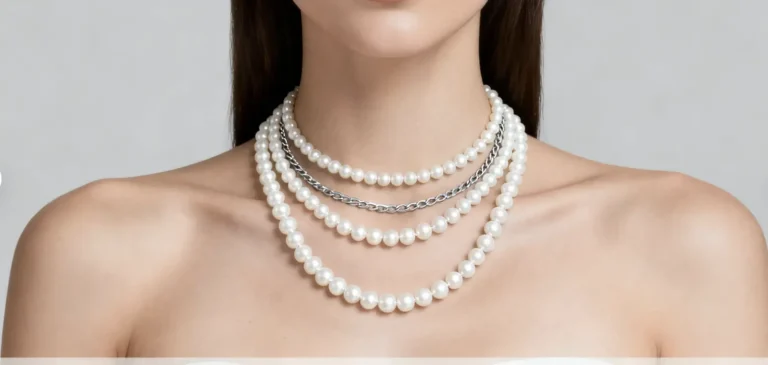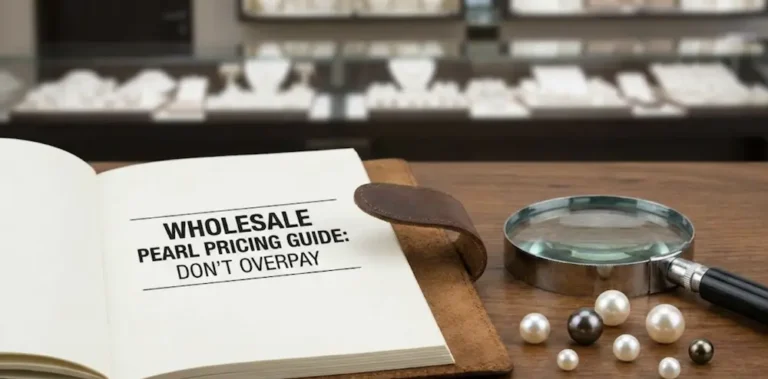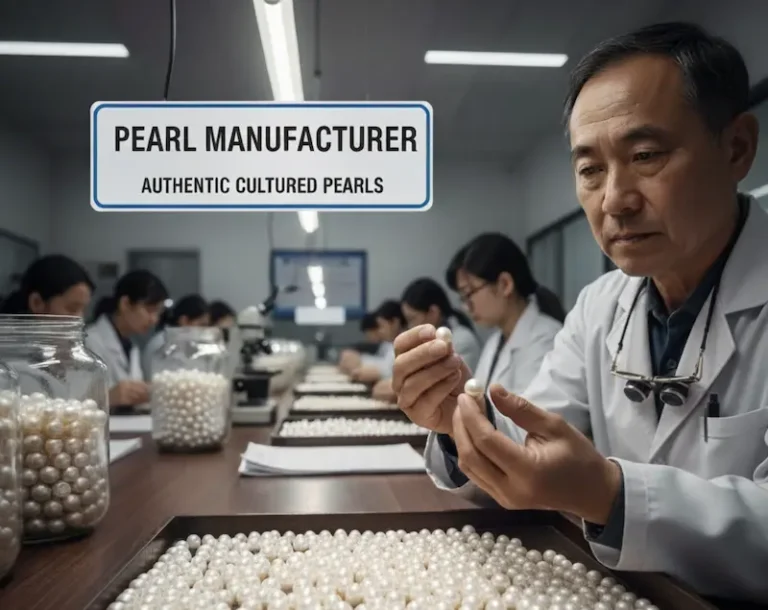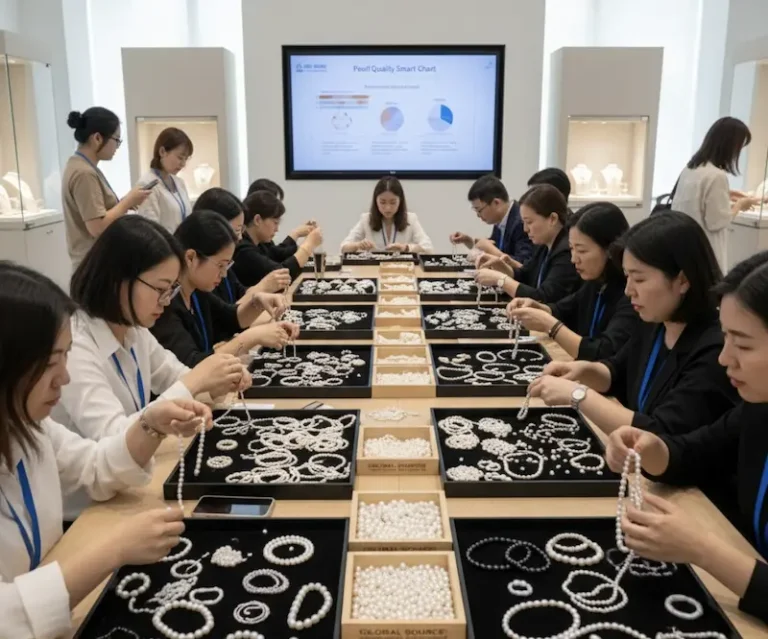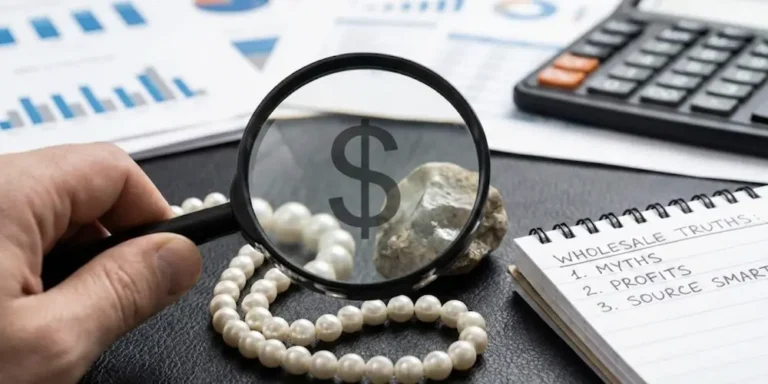When you’re shopping for pearls, the choice between Edison pearls vs. Akoya pearls can feel overwhelming. They’re both beautiful, but Akoya and Edison pearls are totally different. Akoya pearls have been the classic choice for ages, but Edison pearls are the fresh, exciting thing shaking things up right now.
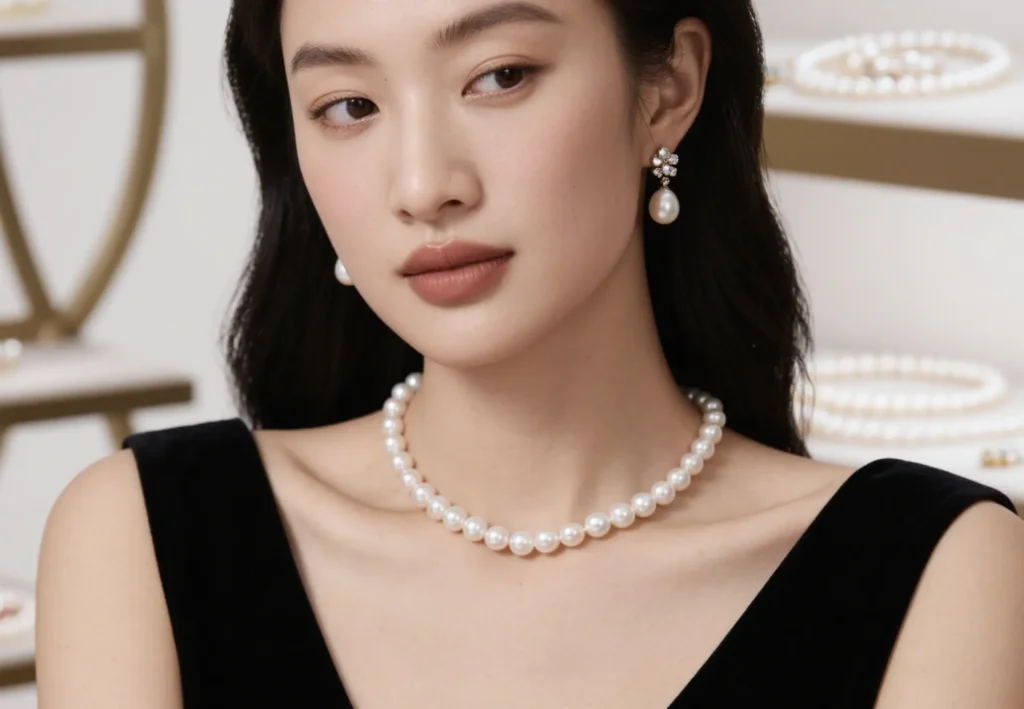
Let me tell you everything you need to know about these two types of pearls so you can pick the perfect one for your jewelry!
Understanding Edison Pearls: The Revolutionary Freshwater Innovation
Edison pearls are one of the coolest new things in pearl farming. They’re freshwater pearls grown with a core, using techniques that were learned from farming saltwater pearls. What’s cool about them is that they bring together the best qualities of both freshwater and saltwater pearls in one.
The story of how Edison pearls came about is really interesting. They were created by Chinese pearl farmers who wanted to take on the popularity of pricey saltwater pearls. Think of it like how regular freshwater pearls became a cheaper alternative to Akoya pearls – Edison pearls were designed to rival those super expensive Australian South Sea pearls.
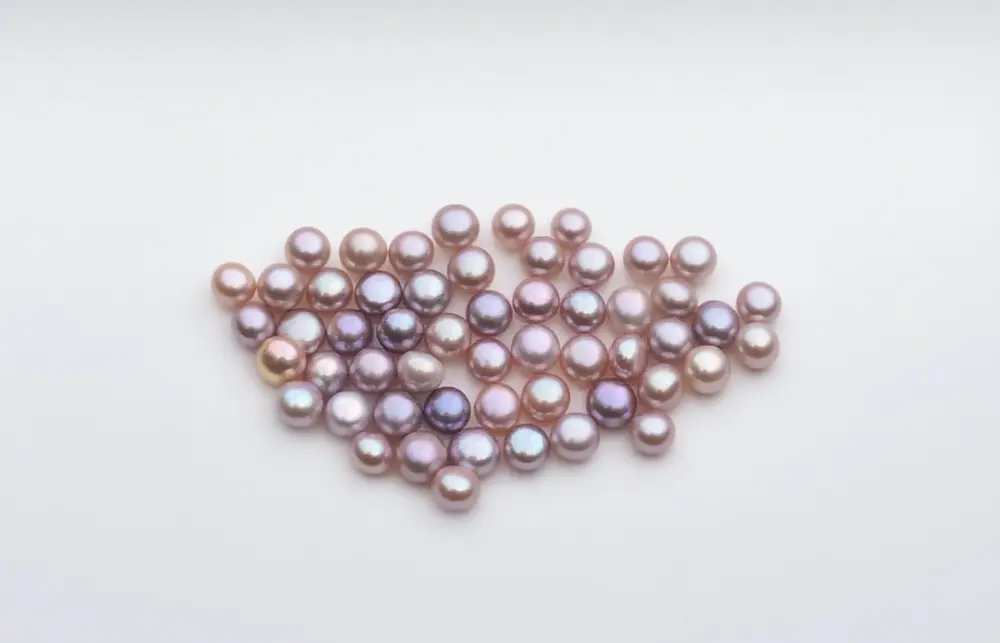
Edison pearls are different from your typical freshwater pearl because of their cultivation. You see, regular freshwater pearls grow without a bead inside, resulting in more irregular shapes. That means you don’t often find them large and perfectly round. But Edison pearls? They’re grown with a bead inside, just like saltwater pearls, which is how they achieve those desirable round shapes and impressive sizes.
The Science Behind Edison Pearl Formation
Edison pearls grow inside freshwater mussels, specifically the Hyriopsis cumingi kind. Farmers insert a round bead into the mussel, and over a couple of years (usually 2-4), the mussel coats the bead with layers of nacre, which is what makes the pearl. This is how they get to be a pretty impressive size, like 11-20mm.
What Makes Akoya Pearls Special: The Classic Choice
Akoya pearls have been the standard for pearl quality for a long, long time – over a hundred years! These saltwater pearls are grown in Pinctada fucata martensii oysters, mostly in Japan and China. They’re also saltwater pearls, found in the Indo-Pacific region.
What makes Akoya pearls so famous is their amazing shine and perfectly round shape. They’re usually white or creamy, with hints of rose, silver, or green. The way they’re grown is very precise, and each oyster usually only produces one pearl.
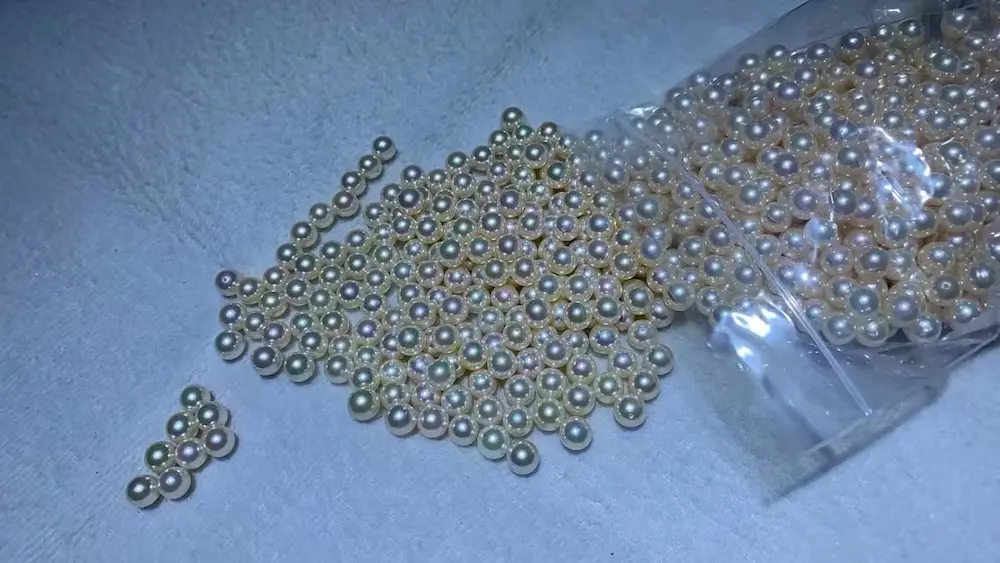
The technique has been refined by generations of Akoya pearl farmers, producing pearls that epitomize style and sophistication.
Over the years, Professional Pearl Manufacturer has perfected the art of growing Akoya pearls, which are the epitome of elegance and style.
Traditional Akoya Cultivation Methods
The process of growing Akoya pearls starts when a small bead nucleus and a piece of mantle tissue are put into young oysters. Then, the oysters are put in nets in the ocean, where they spend 10 months to 2 years making their beautiful treasures. These gems are smaller than Edison pearls, but they are very shiny because they grow in a shorter amount of time.
Edison Pearls vs. Akoya Pearls: The 5 Major Differences
Key Difference #1: Origin and Cultivation Environment
The main difference is where these pearls grow:
- Edison pearls are grown in lakes, rivers, and ponds in China that are fresh water.
- Akoya pearls are grown in saltwater, mostly in the coastal waters of Japan and China.
Edison pearls are grown in rivers, lakes, or streams, while South Sea pearls are grown in the ocean (saltwater). The same idea applies when you compare Edison pearls to Akoya pearls.
Key Difference #2: Size Range and Availability
Size is where these two pearl types really diverge:
Edison Pearls:
- Typical size range: 11-20mm
- Some specimens can reach up to 25mm
- Larger inventory available due to freshwater cultivation
Akoya Pearls:
- Standard size range: 6-10mm
- Rare specimens up to 11mm
- Limited quantities due to saltwater cultivation constraints
Edison pearls are generally more than 9mm, while Akoya pearls are usually much smaller, typically less than 9mm.
Key Difference #3: Color Variety and Natural Hues
The color palette available in each type tells an interesting story:
Edison Pearls:
- Natural colors include white, champagne, peach, lavender, bronze, and pink
- More vibrant and saturated natural colors
- Metallic overtones are common
Akoya Pearls:
- Primarily white and cream
- Subtle overtones of rose, silver, or green
- Classic, understated elegance
Many customers looking for wholesale pearls are surprised by the color diversity available in Edison varieties.
Key Difference #4: Luster and Surface Quality
Both pearl types offer exceptional luster, but they achieve it differently:
Edison Pearls:
- Provide more nacre thickness and shine, with some being downright metallic in appearance
- Thick nacre layers due to longer cultivation periods
- Intense, almost mirror-like reflectivity
Akoya Pearls:
- Classic sharp, crisp luster
- Thinner but extremely high-quality nacre
- Refined, elegant shine
Key Difference #5: Price Point and Value
This is where Edison pearls vs. Akoya pearls show their biggest practical difference:
Edison Pearls:
- Significantly more affordable
- Provide more shine and glow for less money than rival pearls of the same quality
- Excellent value proposition for larger sizes
Akoya Pearls:
- Higher price point due to saltwater cultivation
- Japanese Akoya pearls are more expensive primarily due to rarity and their perceived value as a “high-end” pearl type worldwide
- Premium pricing reflects traditional prestige
Quality Grading: How to Evaluate Both Pearl Types
Understanding quality factors helps you make informed decisions when choosing between Edison pearls vs. Akoya pearls. Both types use similar grading criteria, but the standards can vary slightly.
Surface Quality Assessment
Look for:
- Minimal blemishes or spots
- Smooth, even surface texture
- Consistent nacre thickness
- Natural luster without artificial enhancement
Shape and Symmetry
Round pearls command the highest prices in both categories. However, Edison pearls offer more shape variety, including baroque and semi-round options that can be stunning in contemporary designs.
Best Uses for Each Pearl Type
When to Choose Edison Pearls
Edison pearls excel in:
- Statement jewelry pieces
- Modern, contemporary designs
- Cocktail rings and bold earrings
- Color-coordinated jewelry sets
- Budget-conscious luxury purchases
When to Choose Akoya Pearls
Akoya pearls are perfect for:
- Classic pearl necklaces
- Bridal jewelry
- Professional/business wear
- Traditional pearl strand designs
- Heirloom pieces
Many jewelers source beautiful pearl strands in both varieties to offer customers maximum choice.
Care and Maintenance: Protecting Your Investment
Regardless of whether you choose Edison pearls vs. Akoya pearls, proper care ensures longevity:
- Wipe pearls with a soft cloth after wearing
- Store separately from other jewelry to prevent scratching
- Avoid exposure to chemicals, perfumes, and cosmetics
- Have pearl jewelry restrung every 1-2 years if worn frequently
Long-term Maintenance
- Professional cleaning annually
- Check settings and clasps regularly
- Store in breathable cloth pouches, not airtight containers
Market Trends and Future Outlook
The pearl market is evolving rapidly. Edison pearls are gaining significant market share due to their combination of quality and value. According to industry reports from the Gemological Institute of America, consumer interest in alternative pearl types has increased by 40% over the past five years.
Meanwhile, Akoya pearls maintain their position as the classic choice, with stable demand from traditional jewelry enthusiasts and bridal customers.
Making Your Choice: Edison Pearls vs. Akoya Pearls
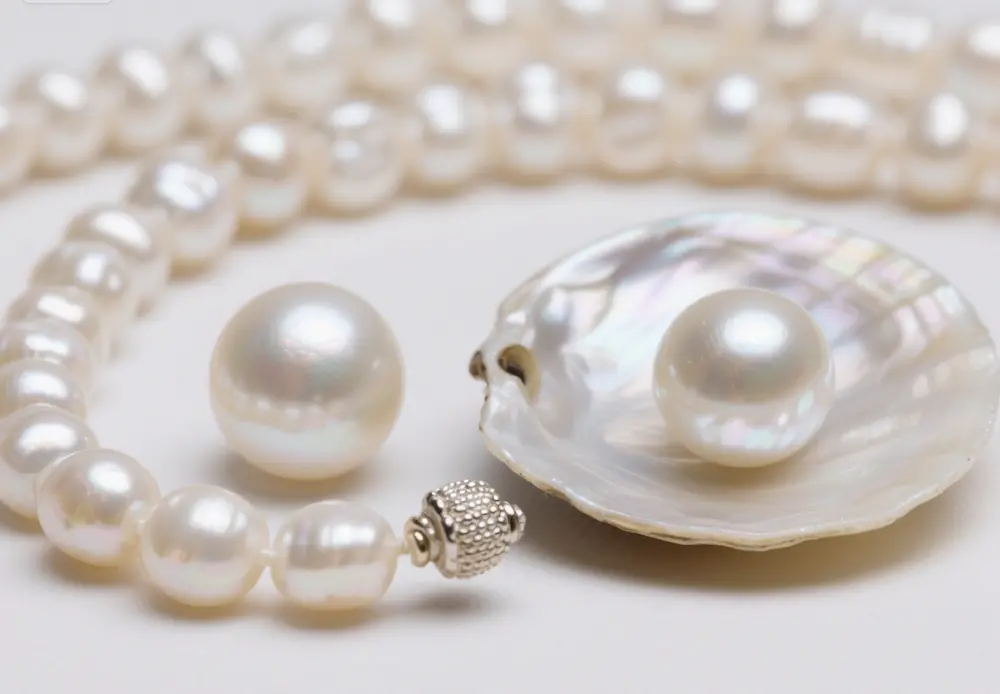
Your decision between Edison pearls vs. Akoya pearls ultimately depends on your priorities:
If you want to buy Edison Pearls:
- You want the best price for the biggest pearl
- You like jewelry that looks modern and catches the eye
- You love having a lot of color choices
- You’re trying to get a good deal.
Choose Akoya Pearls if:
- You like a classic, timeless look
- You love the look of traditional white pearls
- You’re buying things that will last for generations
- You care about the brand’s past and how it is known.
Conclusion: Both Pearls Offer Unique Beauty
The debate between Edison pearls vs. Akoya pearls doesn’t have a single right answer. Both represent excellence in their own categories. Edison pearls bring innovation, size, and value to modern pearl jewelry. Akoya pearls offer time-tested beauty, refinement, and prestige.
Whether you go for the unique appeal of Edison pearls or the timeless beauty of Akoya pearls, you’re investing in natural beauty that will last. More than the type, it’s important to choose high-quality pearls from trustworthy sellers.
Think about visiting well-known suppliers who specialize in both kinds. Seeing Edison pearls and Akoya pearls next to each other can really help you choose the perfect pearl for your jewelry. Remember, the best pearl is the one that you love and that makes you happy whenever you wear it.
FAQs
Are Edison pearls good quality?
Edison pearls are generally considered good quality, known for their luster, size, and unique colors.
What is special about Edison pearls?
Edison pearls are known for their unique luster, round shapes, and large sizes compared to traditional cultured pearls. They are produced by a specific type of freshwater mollusk and are often dyed in vibrant colors, making them popular in jewelry.
This comparison of Edison and Akoya pearls should help you find the perfect pearl for what you need. Whether you’re adding to your jewelry collection or picking out a special gift, knowing the differences will help you make a smart choice.

